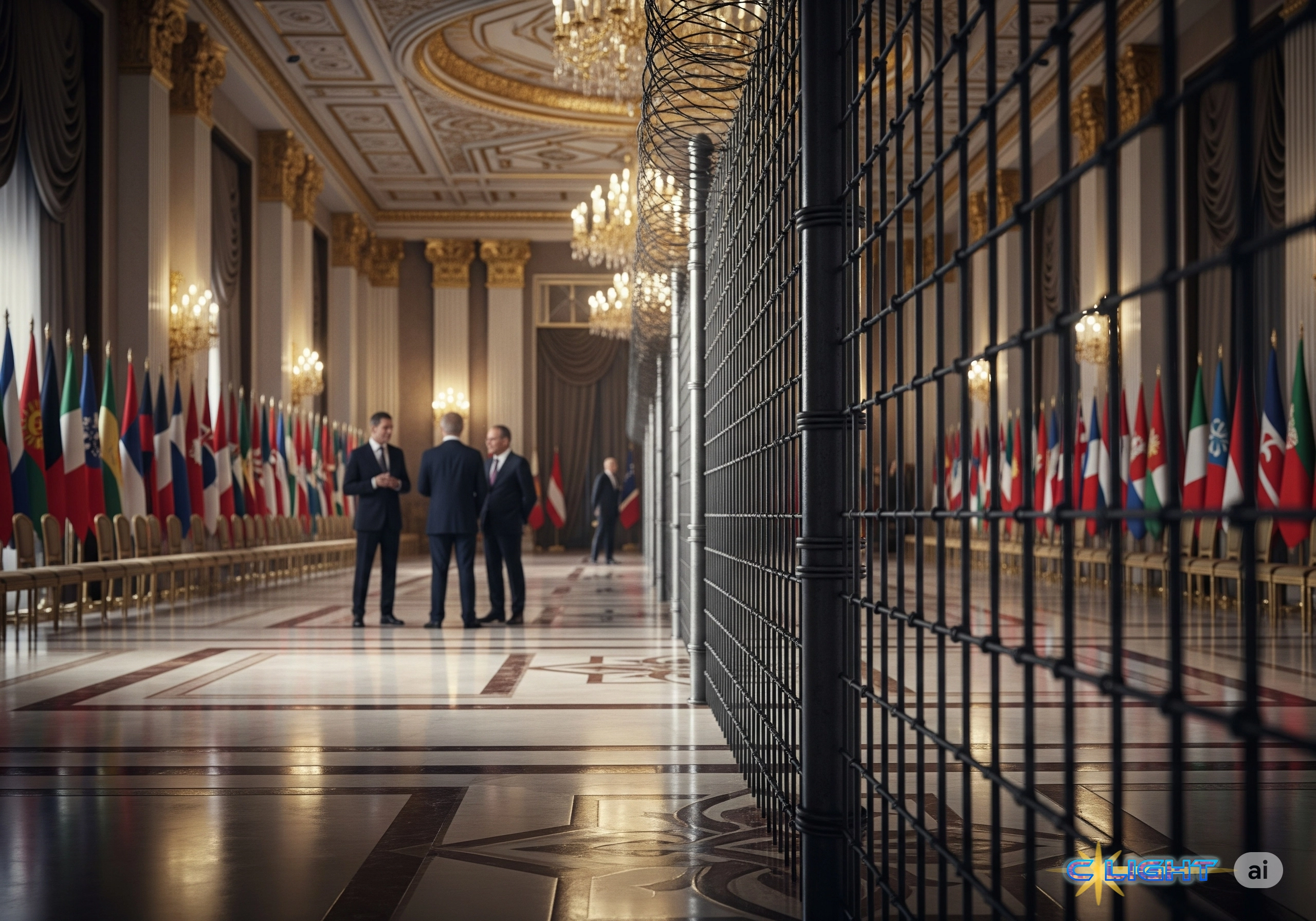At a shooting range ten miles from the Russian border, a Finnish reservist named Janne Latto unpacks a surveillance drone, its quiet whir a stark contrast to the silence of the surrounding forest. He is training for a war he hopes never comes, motivated by the memory of a grandfather who died defending this same land from a Soviet invasion. Meanwhile, 600 miles to the southwest, in the gilded halls of The Hague, leaders of the world’s most powerful military alliance are meticulously debating the wording of a historically short communiqué. The dissonance between these two scenes is the story of NATO today: a sobering disconnect between the grim reality on its frontier and the hollow political theater at its core.
The summit in The Hague has been a masterclass in stage-managed appeasement. The primary objective, as orchestrated by Secretary-General Mark Rutte, has not been to forge a bold new strategy against the alliance’s primary adversary, but to “avoid riling Mr. Trump.” To achieve this, a new, more aggressive strategy document on Russia was reportedly scrapped at Washington’s insistence. A high-level meeting with Ukrainian President Volodymyr Zelenskyy was never even considered. The entire affair has been kept intentionally brief to “limit the chance of division.”

The summit’s singular, declared “victory” is a new pledge for members to spend 5% of their GDP on defense. But even this is a piece of political theater. The target includes a clever 1.5% “workaround” for civilian infrastructure like roads and bridges, a concession designed to help more nations appear to meet the goal. While leaders praise this manufactured unity, key members like Spain have already declared the target “unreasonable,” and President Felonious Punk himself has suggested the U.S. shouldn’t have to comply. It is a hollow victory, designed to give the American president a talking point, not to create a truly integrated European defense. The primary casualty of this performance is Ukraine, whose leader was relegated to bilateral meetings on the sidelines while his country’s existential fight was carefully kept off the main stage.
While diplomats in The Hague tiptoe around their talking points, a “re-bordering” of Europe is underway on the ground. The once-busy E18 motorway that connects Helsinki to St. Petersburg now ends abruptly at a cold, metal barricade. Finland is constructing a 15-foot-high, 124-mile-long fence along its most vulnerable sections of the border, a physical manifestation of the new Iron Curtain. Its military is stockpiling landmines, purchasing F-35 fighter jets, and expanding its reserve force to one million strong. Across the border, satellite images show Russia quietly reactivating and upgrading Soviet-era military garrisons. This is not a theoretical exercise for the Finns; it is a sober, determined preparation for a potential conflict that their leaders in NATO seem determined to ignore in their official strategy.

This reveals the unnerving truth at the heart of the alliance. The strategic threat, as detailed in recent analyses, is clear: a potential Russian hybrid attack, perhaps under the pretext of a staged incident in the Baltic, that could trigger a $1.5 trillion global economic shock. The response on the front lines in Finland is equally clear. But the political center of the alliance appears hollow. A populist bloc, led by the American president and supported by leaders in Hungary and Slovakia, does not share the same threat assessment as the rest of NATO and believes good relations with Russia are paramount.
The summit in The Hague will likely be hailed by its organizers as a success for demonstrating unity. But it is a fragile, manufactured unity that papers over a terrifying strategic disconnect. The most alarming takeaway is not that NATO is divided on how to handle Russia; it is that the alliance has chosen to pretend it is not, all for the sake of political expediency. And while the leaders congratulate themselves on their performance, the men and women on the front lines continue to train, to build fences, and to prepare, largely alone, for a war their alliance dares not even name.
Discover more from Clight Morning Analysis
Subscribe to get the latest posts sent to your email.









